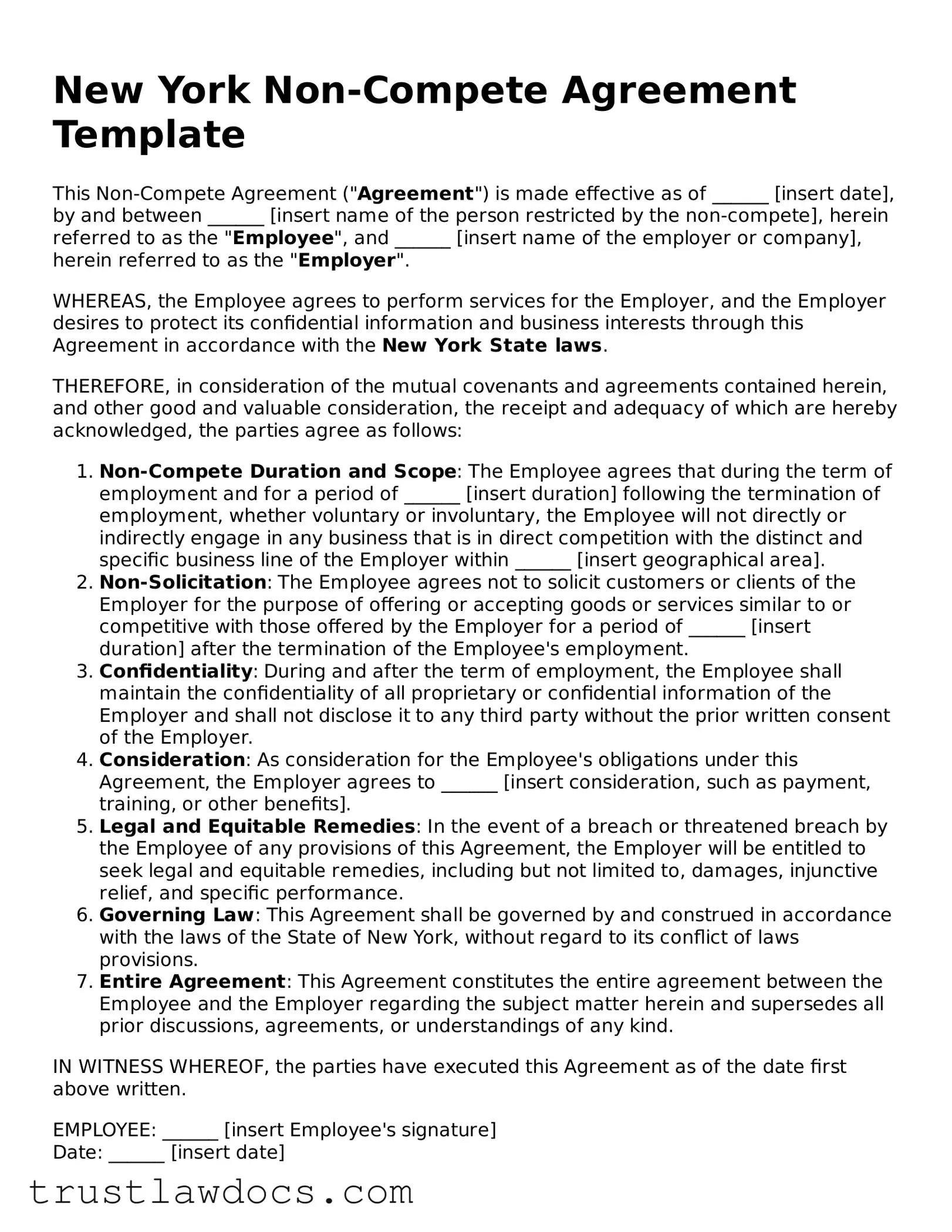What is a Non-compete Agreement in New York?
A Non-compete Agreement in New York is a legal contract between an employer and employee. This agreement restricts the employee from engaging in business activities that compete with their employer's business during and after the termination of their employment. The purpose is to protect the employer's legitimate business interests, such as confidential information, trade secrets, and customer relationships.
Can anyone in New York be required to sign a Non-compete Agreement?
Technically, yes, but there are restrictions. New York law requires that non-compete agreements be reasonable in scope, duration, and geographical area. They are more commonly required for employees in higher-level positions or those with access to confidential business information. Employees in lower-level positions are less likely to be bound by such agreements, as courts scrutinize the necessity of a non-compete clause in relation to the employee's role.
Are Non-compete Agreements enforceable in New York?
Yes, but with significant limitations. Courts in New York enforce Non-compete Agreements only when they are deemed necessary to protect valid business interests, appropriately limited in time and geographical scope, and do not impose undue hardship on the employee. They also must not harm the public interest. Each agreement is subject to a case-by-case examination to determine its enforceability.
What constitutes a “reasonable” Non-compete Agreement in New York?
A “reasonable” Non-compete Agreement in New York is typically limited to what is necessary to protect the employer’s legitimate business interests, such as preventing the disclosure of confidential information or the solicitation of customers. Reasonableness in duration usually means not longer than necessary to protect these interests, often one to two years. Geographical limitations must also directly relate to the area where the employer does business.
Can I negotiate the terms of a Non-compete Agreement?
Yes, employees are encouraged to negotiate the terms of a Non-compete Agreement before signing. This can include negotiating the length of time the agreement is in effect, its geographical limitations, and what constitutes competitive activities. It’s beneficial to have legal counsel review the agreement to ensure that it is fair and reasonable.
What happens if I break a Non-compete Agreement in New York?
If you break a Non-compete Agreement in New York, the employer may take legal action against you. This can include suing for damages that resulted from the breach or seeking a court order to prevent you from continuing the prohibited activity. The specific consequences depend on the terms of the agreement and the nature of the violation.
Are there any exceptions to Non-compete Agreements in New York?
Yes, there are exceptions. For instance, attorneys cannot be bound by Non-compete Agreements as it goes against public policy regarding the practice of law. Additionally, courts may refuse to enforce agreements that are overly broad in scope or duration, or those that unnecessarily restrict an employee’s ability to find employment.
Does the nature of my job affect the enforceability of a Non-compete Agreement?
Absolutely. The more integral your role and the more access you have to confidential information, the more likely a Non-compete Agreement will be considered enforceable. For employees in more generic roles without access to sensitive information, courts might view such agreements as unreasonable and therefore unenforceable.
Can a Non-compete Agreement be modified after it’s been signed?
In some cases, yes. Modifications to a Non-compete Agreement require the consent of both the employer and the employee. Changes might be made to reflect a promotion, change in job duties, or other significant alteration in employment conditions. However, any modification needs to be made in writing and signed by both parties.
What should I do if I’m unsure about signing a Non-compete Agreement?
If you're unsure about signing a Non-compete Agreement, seek advice from a legal professional. They can provide guidance on whether the agreement is reasonable and how it might impact your future employment opportunities. It's important to fully understand your rights and the agreement's implications before signing.
